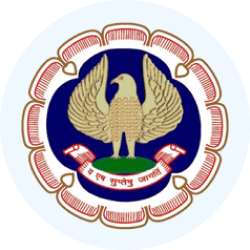CA Intermediate Exam > CA Intermediate Videos > Crash Course for CA Intermediate > Cost of Capital - 1
Cost of Capital - 1 Video Lecture | Crash Course for CA Intermediate
FAQs on Cost of Capital - 1 Video Lecture - Crash Course for CA Intermediate
| 1. What is the cost of capital and why is it important for businesses? |  |
Ans. The cost of capital refers to the minimum return that a company must earn on its investments to satisfy its investors, both equity and debt holders. It is crucial for businesses as it serves as a benchmark for evaluating investment opportunities. If the expected return on an investment is less than the cost of capital, the investment may not be worthwhile, potentially leading to losses and diminishing shareholder value.
| 2. How is the cost of equity calculated? |  |
Ans. The cost of equity can be calculated using models such as the Capital Asset Pricing Model (CAPM). The formula is: Cost of Equity = Risk-Free Rate + Beta × (Market Return - Risk-Free Rate). Here, the risk-free rate is the return on government bonds, beta measures the stock’s volatility in relation to the market, and the market return is the average return expected from the market. This calculation helps determine the return required by equity investors.
| 3. What factors influence the cost of debt? |  |
Ans. The cost of debt is influenced by several factors including the risk associated with the company, prevailing interest rates, the company's credit rating, and the terms of the debt. Higher perceived risk leads to higher interest rates, while a lower credit rating can also increase borrowing costs. Companies with stable cash flows generally enjoy lower costs of debt due to reduced risk for lenders.
| 4. What is the weighted average cost of capital (WACC) and how is it calculated? |  |
Ans. The weighted average cost of capital (WACC) represents a company's average cost of capital from all sources, including equity and debt, weighted by their respective proportions. The formula is WACC = (E/V × Re) + (D/V × Rd × (1 - Tc)), where E is the market value of equity, V is the total market value of the firm (equity + debt), Re is the cost of equity, D is the market value of debt, Rd is the cost of debt, and Tc is the corporate tax rate. WACC is essential for assessing investment decisions and overall business performance.
| 5. How does the cost of capital affect investment decisions? |  |
Ans. The cost of capital significantly impacts investment decisions as it sets the hurdle rate for new projects. If the expected return on a project exceeds the cost of capital, it is considered a viable investment opportunity. Conversely, projects yielding returns below the cost of capital may lead to a decrease in overall company value. Thus, understanding and accurately estimating the cost of capital is fundamental for making informed strategic choices in resource allocation.
Related Searches















